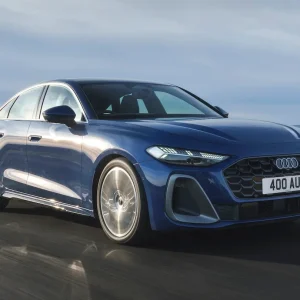Regular readers will remember stories we ran in December 2012, and again late last year, detailing Glass’s long-awaited foray into the world of forecast values, offering the fleet and finance sector an alternative to Cap at the sharp end of predicted residuals.
The entry has been delayed while the firm makes changes and enhancements, but GlassForecast is now live and operational.
“It’s taken longer than we would have liked,” admits Glass’s managing director Ian Tilbrook, who confesses to be part of the delay because he joined last year and applied his understanding of customer needs as former boss of ING Car Lease.
“I was the first problem,” he tells BusinessCar. “This is a market where we have a challenger. We’ve recognised the importance of the rival and I thought we could do better.”
The firm trialled and consulted with 25 of the top 50 leasing companies, as well as major finance houses and large leasing firms.
“GlassForecast has the potential to transform our customers’ businesses,” declares Tilbrook. “And it’s taken longer than we would have wanted. Rigorous market testing caused the delay because we could have gone earlier. Leasing guys know what they want and you can’t go in half-hearted.”
Glass’s head of fleet and finance sales Dan Parnell confirms that Glass’s could have gone live 12 months ago with a product similar to what is already in existence, but claims Forecast “innovates and will excite the marketplace”.
“It will deliver the next level of understanding and not just meet expectations,” he pledges, adding that the Forecast tool will “deliver more information and intelligence than the market had before”.
One element the company feels leads the market is the plate-change effect calculation, that contributed to Forecast’s significant delays, but which Parnell says adds “significant value” for customers.
“We’re very conscious that depreciation doesn’t occur over 12 months as a straight line – it happens in chunks around plate and year changes,” explains Parnell. “The industry has been used to [moving] between two points in a straight-line fashion because that’s the way the information has been provided by other providers.” He gives the example of December to January potentially accounting for up to 30% of the annual depreciation, rather than it being viewed as merely one month out of 12. “People in our industry know that, but they’ve never had the data to back it up. We’re not teaching them to suck eggs because they know all that,” he continues.
Glass’s is also actively seeking interaction for its editors, touting them as an essential part of its offering.
“We bring the huge wealth of data, insight and experience of the editorial team,” continues Parnell. “While we are a data organisation, we are data and intelligence, [with the] editorial expertise to spot short-term trends and what is a long-term movement.”
Tilbrook says that Glass’s editorial team will be expanded as demand grows, and that he wants his editors to be “accessible to any of our customers to talk about any of our values”.
“I want my editors to create a relationship with customers where they feel at ease and have a level of trust to have appropriate conversations about our values,” adds Tilbrook. “We’re a data business, but it’s about relationships – if people trust our people it goes on to trusting our data.”
Parnell is hoping fleet and finance organisations will look on Forecast as “the extra man” on RV committees. “History and analysis can’t tell you everything – what you need is an editor to give an opinion too,” he says.
A key area for Glass’s is the increased scrutiny lenders and financers are under in the leasing segment, particularly those that are bank-owned.
“These organisations can no longer go back and say this is our [residual value] number – they now need to know why it is this number and how they got to it,” says Tilbrook. “RV management falls under risk management, and we are enabling the customers – the operations manager, RV or WLC [whole-life cost] manager – and helping them give the answers they need on how they are managing the risk.”
Giving leasing companies and RV setters a second opinion is crucial to the prospects of Forecast.
“Initially, coming out from the industry was that they wanted more advice and more opinion – they want more rather than less or different,” reveals Parnell. “Funding and the cost of funding regularly comes up. They need some back-up or a difference of opinion – it helps them achieve the quest for more funds and more flexibility. And the funder makes money by lending, so if they can see an opportunity and understand the market it will free up more into the sector.”
Smaller lease firms could also benefit, he claims, as they don’t have a team of RV analysts. “If Glass’s give another opinion, it encourages those buyers to take more risk and be more competitive,” says Parnell.
Tilbrook admits that Glass’s representation in the fleet and finance sector has been small until now, but says Forecast could be the beginning of a wider push by the data giant.
“This is the start. At Glass’s we market a whole range of data-related products,” he states. “In fleet and finance, an alternative provider has taken a lead on Glass’s and become inherent and in some cases integrated – Forecast will hopefully lead the industry into looking at other data from Glass’s, such as SMR modelling for example.”
But the current system isn’t done and dusted yet, despite both car and LCV tools now being live. The firm is looking at further developments, including depreciation on options, so there will be more to come on Forecast as Glass’s seeks to move in on rival Cap’s fleet and finance sector RV prediction domination.





